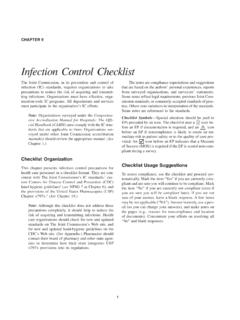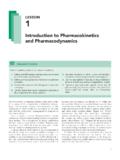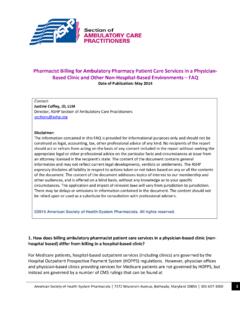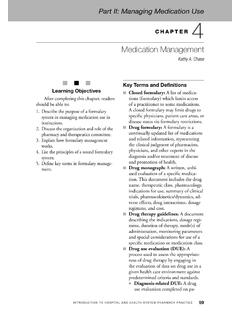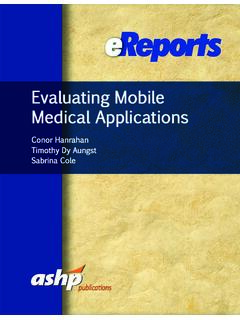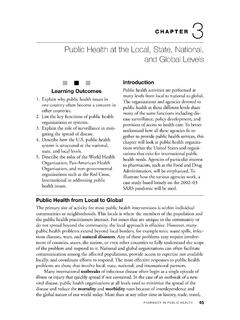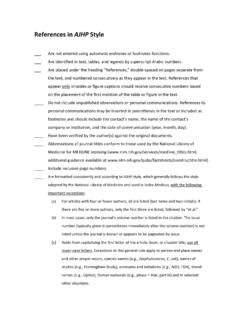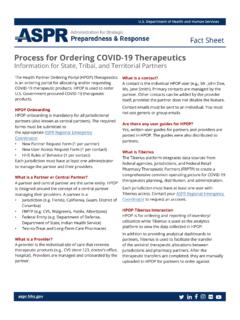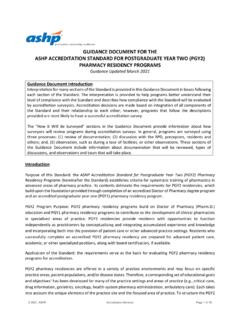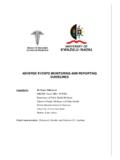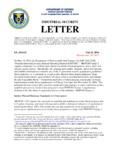Transcription of Adverse Drug Reaction Reporting - ashp.org
1 PT Chapter 40 Adverse drug Reaction ReportingLee B. Murdaugh, RPh, PhDThe Conditions of Participation standards of the Centers for Medicare & Medicaid Services (CMS) and the standards of accrediting organizations such as The Joint Commission, the Healthcare Facilities Accredi-tation Program (HFAP), and the National Integrated Accreditation for Healthcare Organizations (NIAHOSM) require hospitals to identify and report Adverse drug reactions (ADRs). These ADRs must be reported to patients attending physicians and the hospital s quality assessment and performance improvement program.
2 Additionally, hospitals are expected to report serious ADRs (as defined by the Food and drug Administration [FDA]) to the FDA s MedWatch program and ADRs to vaccines to the FDA s Vaccine Adverse Events Reporting System (VAERS).Defining Adverse drug ReactionsTo recognize and assess ADRs, there must be a defini-tion of what constitutes an ADR. Examples of commonly used definitions are discussed in the following FDA defines a serious Adverse Reaction as one in which the patient outcome is death, life threat-ening (real risk of dying), hospitalization (initial or prolonged), disability (significant, persistent, or perma-nent), congenital anomaly, or required intervention to prevent permanent impairment or damage.
3 1 The American Society of Health-System Pharma-cists (ASHP) defines a ADR as any unexpected, unin-tended, undesired, or excessive response to a drug that requires discontinuing the drug (therapeutic or diagnostic) requires changing the drug therapy requires modifying the dose (except for minor dosage adjustments) necessitates admission to a hospital Define an Adverse drug Reaction . Discuss the detection of Adverse drug reactions . Discuss the assessment of Adverse drug OBJECTIVES546 Competence Assessment Tools for Health-System Pharmacies prolongs stay in a healthcare facility necessitates supportive treatment significantly complicates diagnosis negatively affects prognosis or results in temporary or permanent harm, disability, or death.
4 2 The ASHP definition includes allergic reactions (an immunologic hypersensitivity response to a drug ) and idiosyncratic reactions (an abnormal response to a drug that is specific to an individual).ASHP excludes the following from this definition: drug withdrawal drug -abuse syndromes Accidental poisonings drug overdose complications Side effectsA side effect is defined as an expected, well-known Reaction resulting in little or no change in patient management that occurs with a predictable frequency and whose intensity and occurrence are related to the size of the dose.
5 2 The World Health Organization (WHO) defines an ADR as any response to a drug , which is noxious and unintended, and which occurs at doses used in man for prophylaxis, diagnosis, or therapy or for modifica-tion of physiologic function. 3 The definition excludes cases attributed to drug abuse or overdose (intended or unintended).Karch and Lasagna define an ADR as any response to a drug that is noxious and unintended and that occurs at doses used in humans for prophylaxis, diagnosis, or therapy, excluding failure to accomplish the intended purpose.
6 4 In addition to the exclusions of the WHO definition, this definition also excludes therapeutic appropriate policies and procedures to identify the definition used by your of Adverse drug EventsSigns and SymptomsSigns and symptoms of ADRs are many and varied and may be similar to signs and symptoms of disease states or medical conditions. Table 40-1 contains some of the common signs and symptoms of ADRs (grouped by body systems) that may be seen in patients during routine observation and assessment. Inclusion of an individual sign or symptom will depend on the defini-tion of an ADR at the specific SystemsThere are three types of surveillance systems that may be used to detect ADRs: 1.
7 Prospective2. Concurrent3. RetrospectiveIdentifying which methods to use will depend on the unique characteristics of a facility. However, ADRs are more likely to be detected when a combination of surveillance systems are used. It should be noted that the success of any surveillance system depends on the willing participation of healthcare professionals in Reporting SURVEILLANCE SYSTEMP rospective surveillance occurs prior to initiation of medication therapy and can be accomplished in two ways:1. Monitoring of patients who are at a high risk for experiencing ADRs Risk factors for ADRs include the following: Polypharmacy Extremes of age ( , neonatal, pediatric, and geriatric patients) Presence of concurrent disease states ( , impaired renal or hepatic function) Severity of illness History of allergy/previous ADR Pharmacodynamic/pharmacokinetic changes2.
8 Monitoring of patients who are receiving medica-tions known to have a high potential for causing ADRs The drug classes most frequently impli-cated in ADRs include the following: Anticoagulants ( , heparin and warfarin) Antimicrobials ( , penicillins, cephalospo-rins, sulfa antibiotics, and aminoglycosides) Antineoplastics Cardiac agents ( , antiarrhythmics, digoxin, diuretics, and antihypertensives) Central nervous system (CNS) agents ( , analgesics, anticonvulsants, and sedatives/hypnotics) Diagnostic agents ( , contrast media) Adverse drug Reaction Reporting 547 TABLE 40-1.
9 Signs and Symptoms of ADRs by Body SystemBody SystemExamplesCardiovascular Arrhythmias Angina Hypertension Hypotension Bradycardia TachycardiaDermatological Rash Itching Erythema Hives Phlebitis Bruising Petechiae EcchymosisEndocrine/metabolic Hyperglycemia Hypoglycemia Sexual dysfunction HypothyroidismENT/oral Altered taste Stomatitis Thrush Tinnitus Hearing lossReproductive Fetal hemorrhage Fetal respiratory depression TeratogenesisElectrolyte homeostasis Hyperkalemia Hypokalemia Hypernatremia HypocalcemiaGastrointestinal Diarrhea Constipation Nausea/vomiting HemorrhageGeneralized Anaphylaxis Fever Skin Reaction AngioedemaBody SystemExamplesHematological Bleeding Increased eosinophils Increased PT and PTT Decreased WBC, RBC, HCT, and plateletsHepatic Hepatitis Jaundice Increased AST, ALT.
10 And LDHM usculoskeletal Arthritis Joint pain MyalgiaNeurological Headache Tremor Seizures Drowsiness/somnolence Vertigo Altered vision Movement disorders ( , dyskinesia, akathisia, tardive dyskinesia) Depression Confusion Agitation Psychosis HallucinationsRenal Bladder spasms Oliguria Increased BUN or creatinine Renal failureRespiratory Wheezing Increased or decreased respirationsALT = alanine transaminase; AST = aspartate aminotransferase; BUN = blood urea nitrogen; ENT = ear, nose, throat; HCT = hematocrit; LDH = lactate dehydrogenase; PT = prothrombin time; PTT = partial thromboplastin time; RBC = red blood cell.
